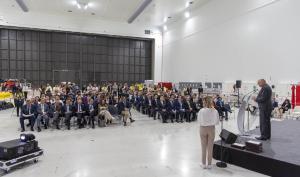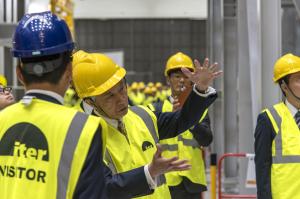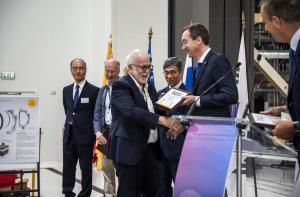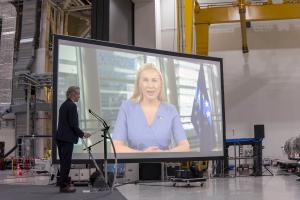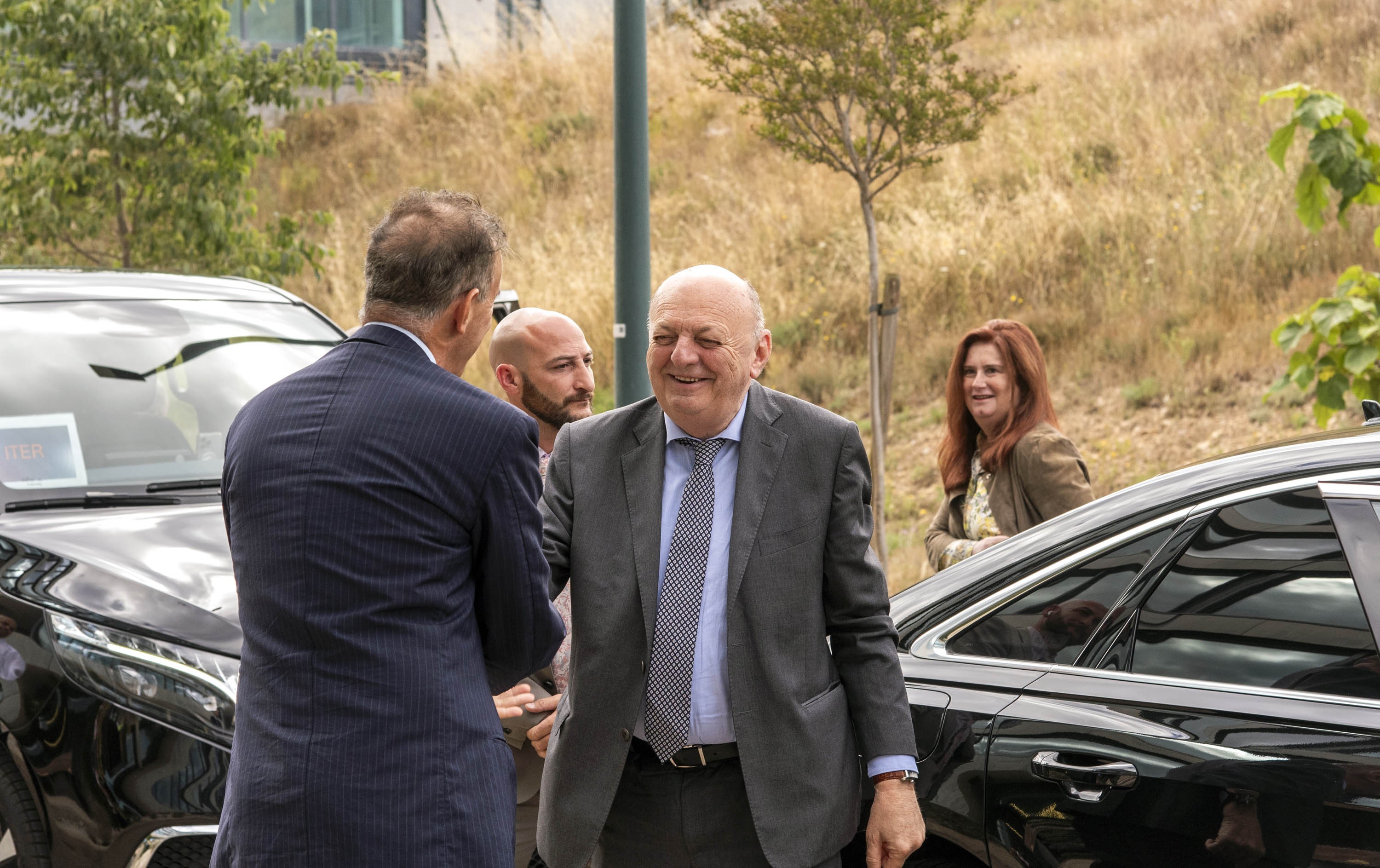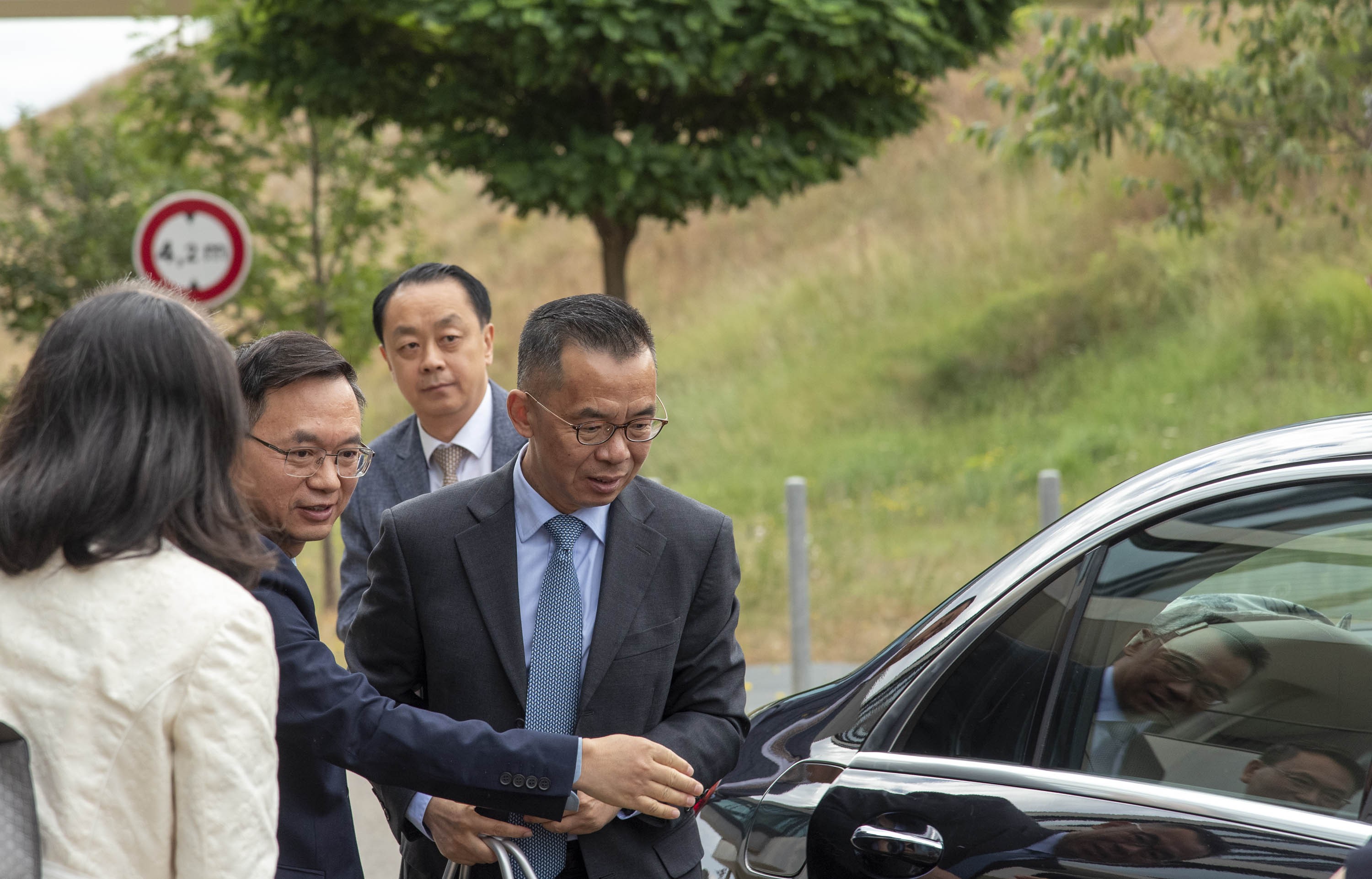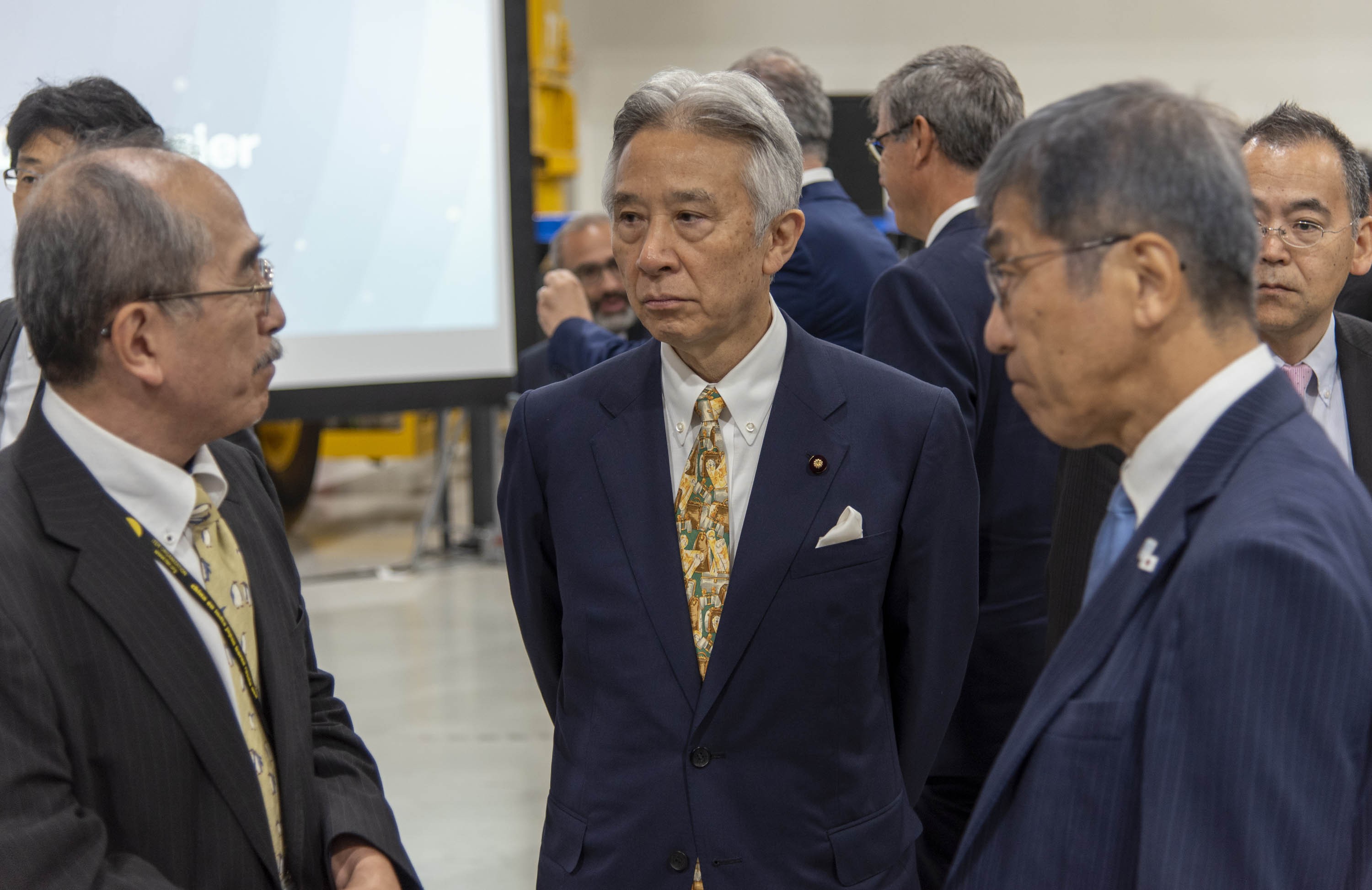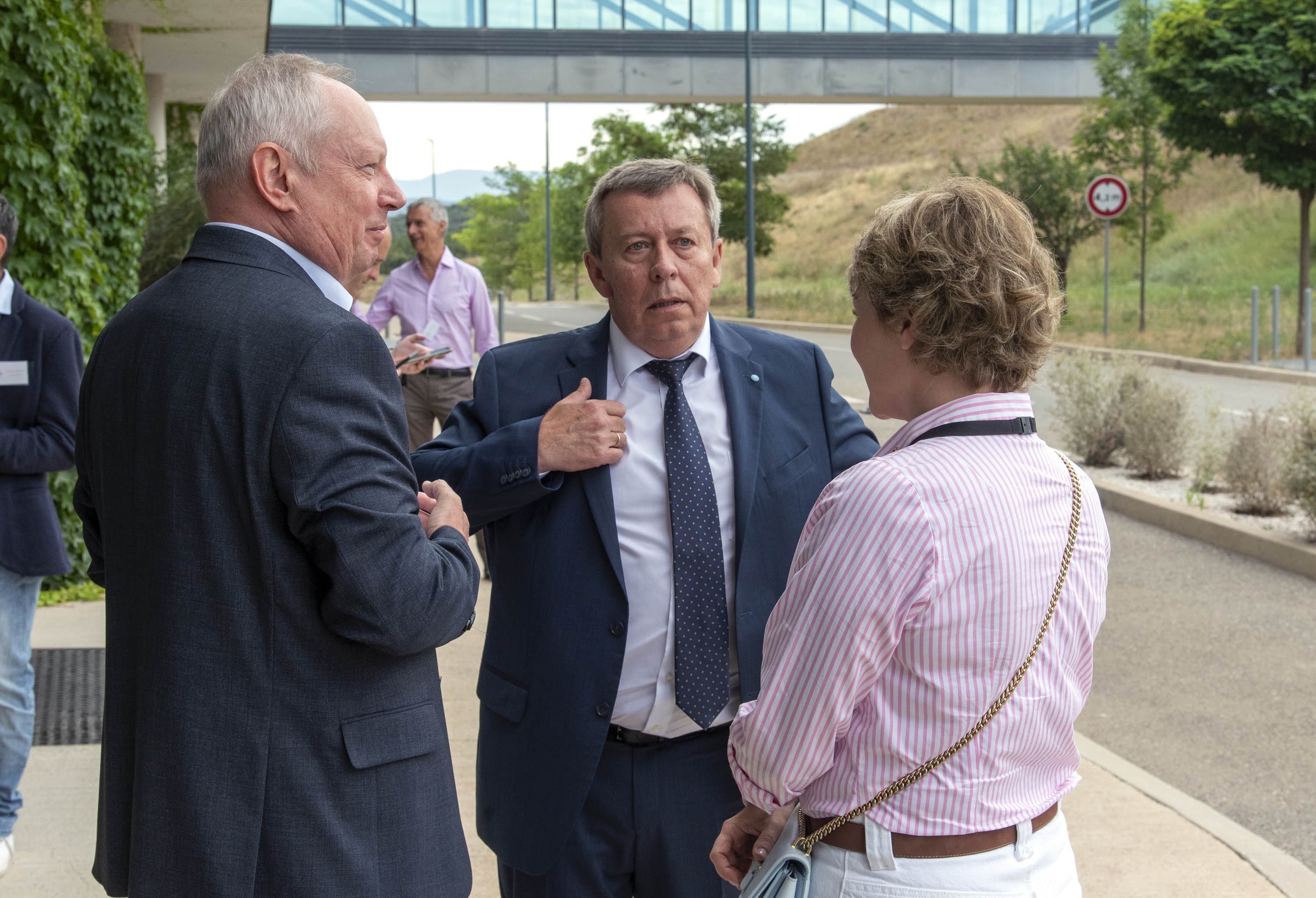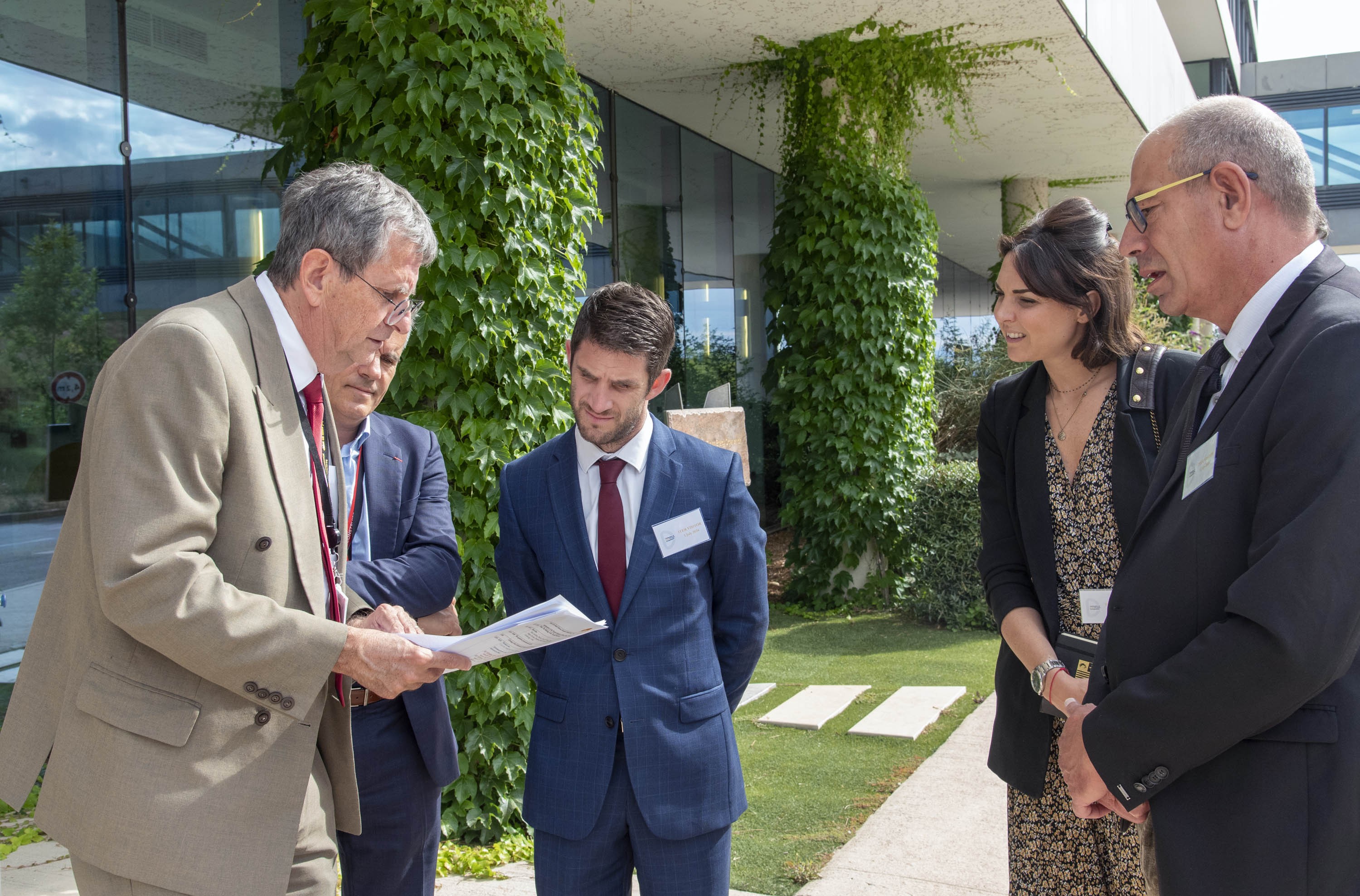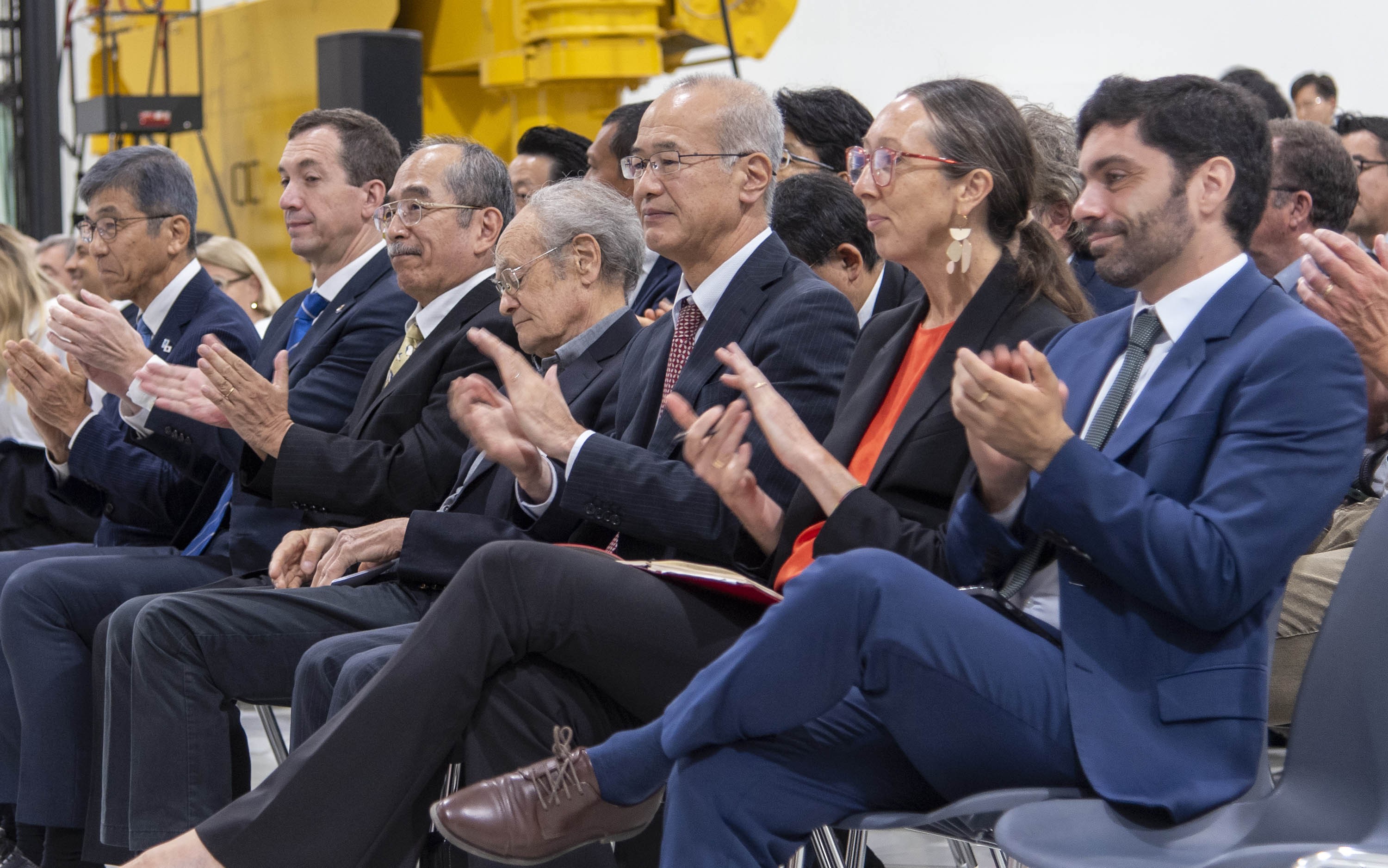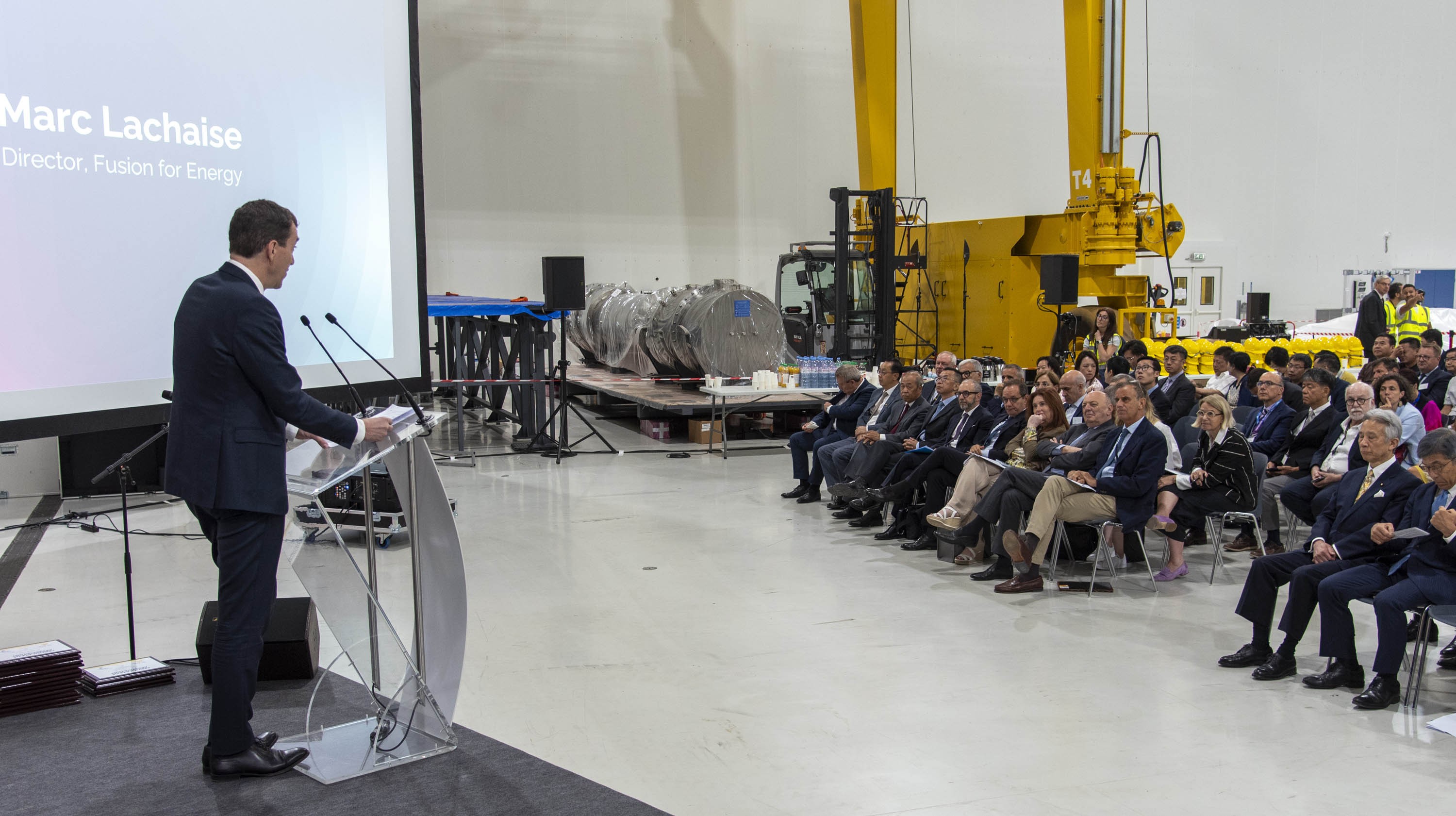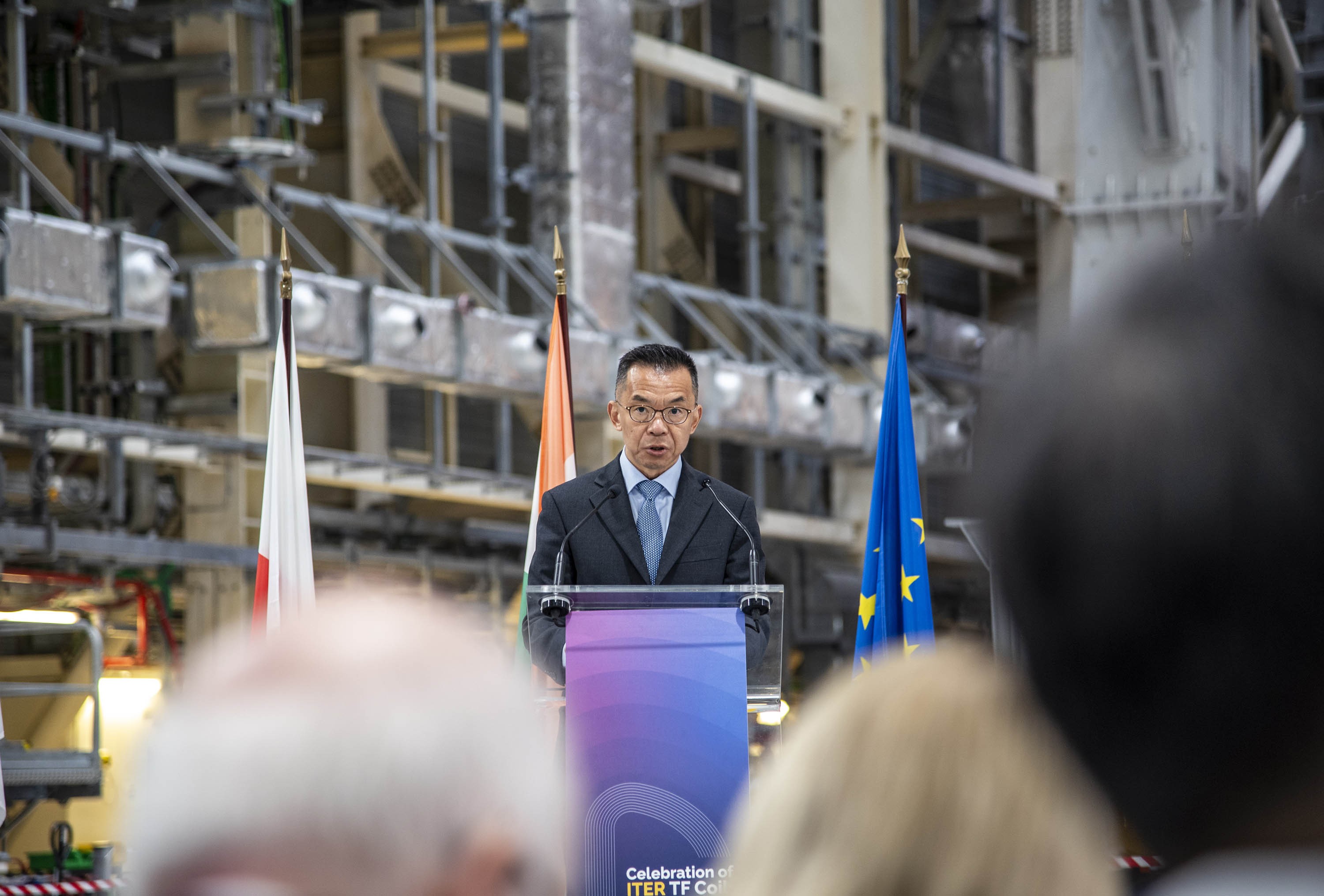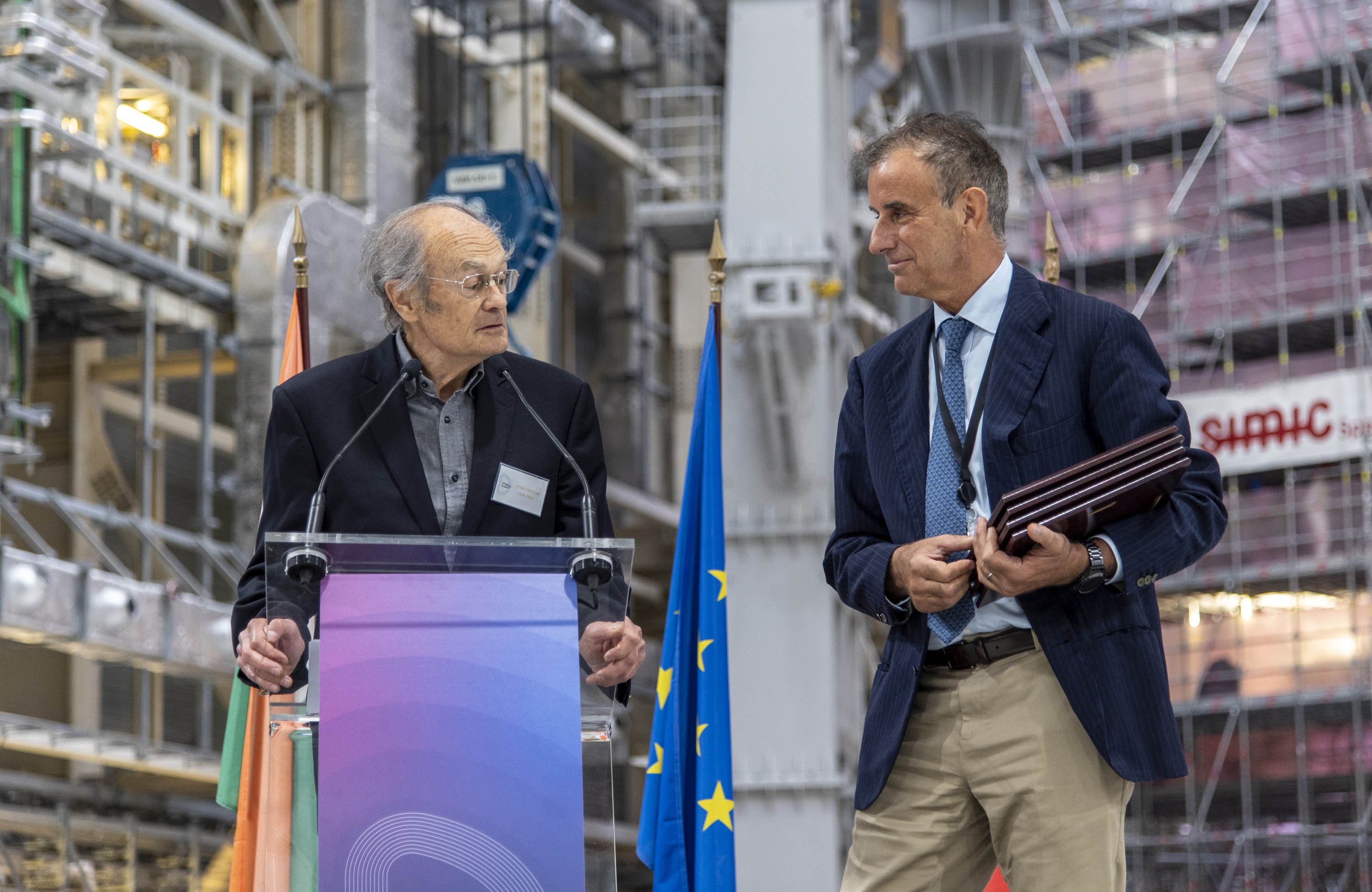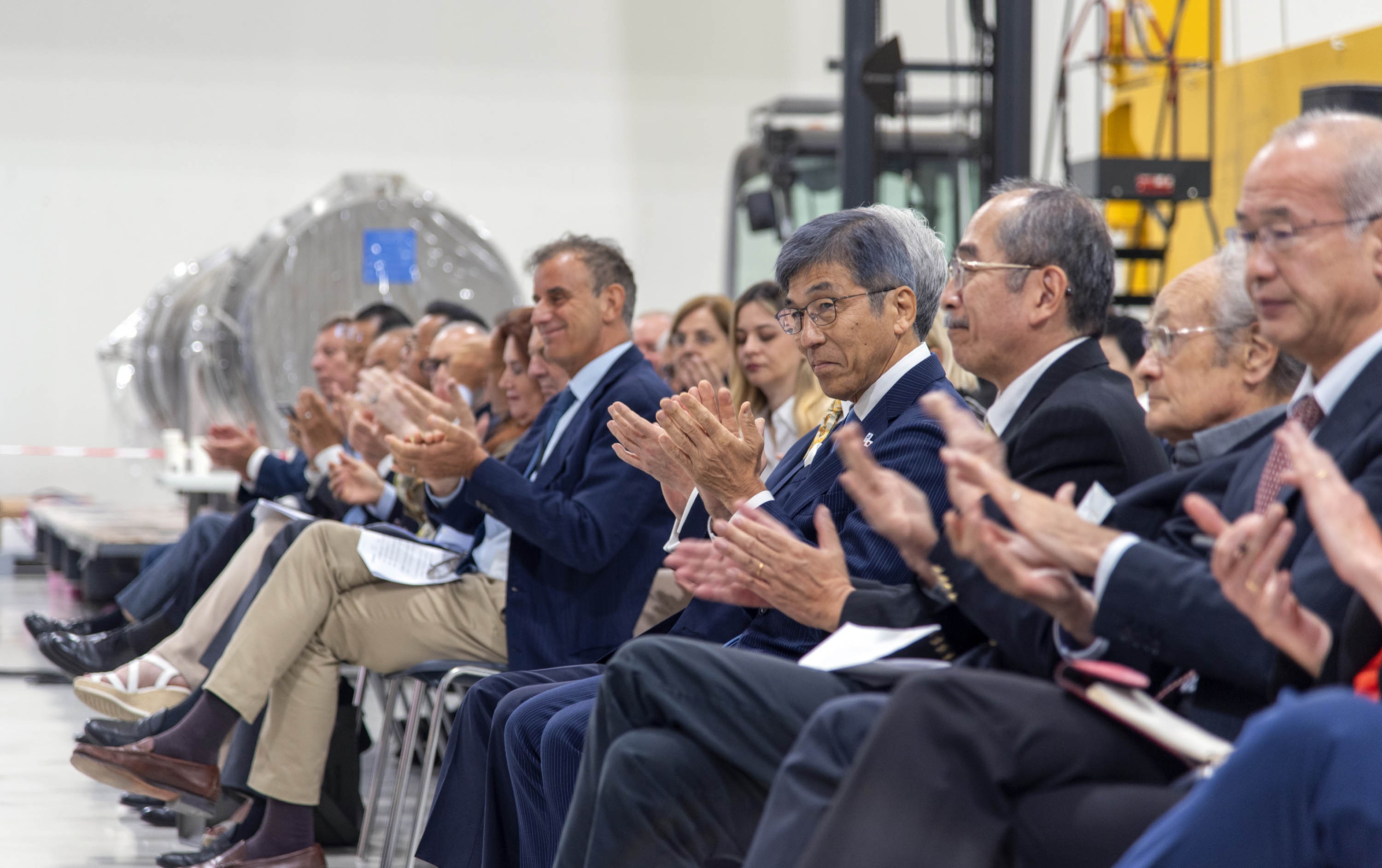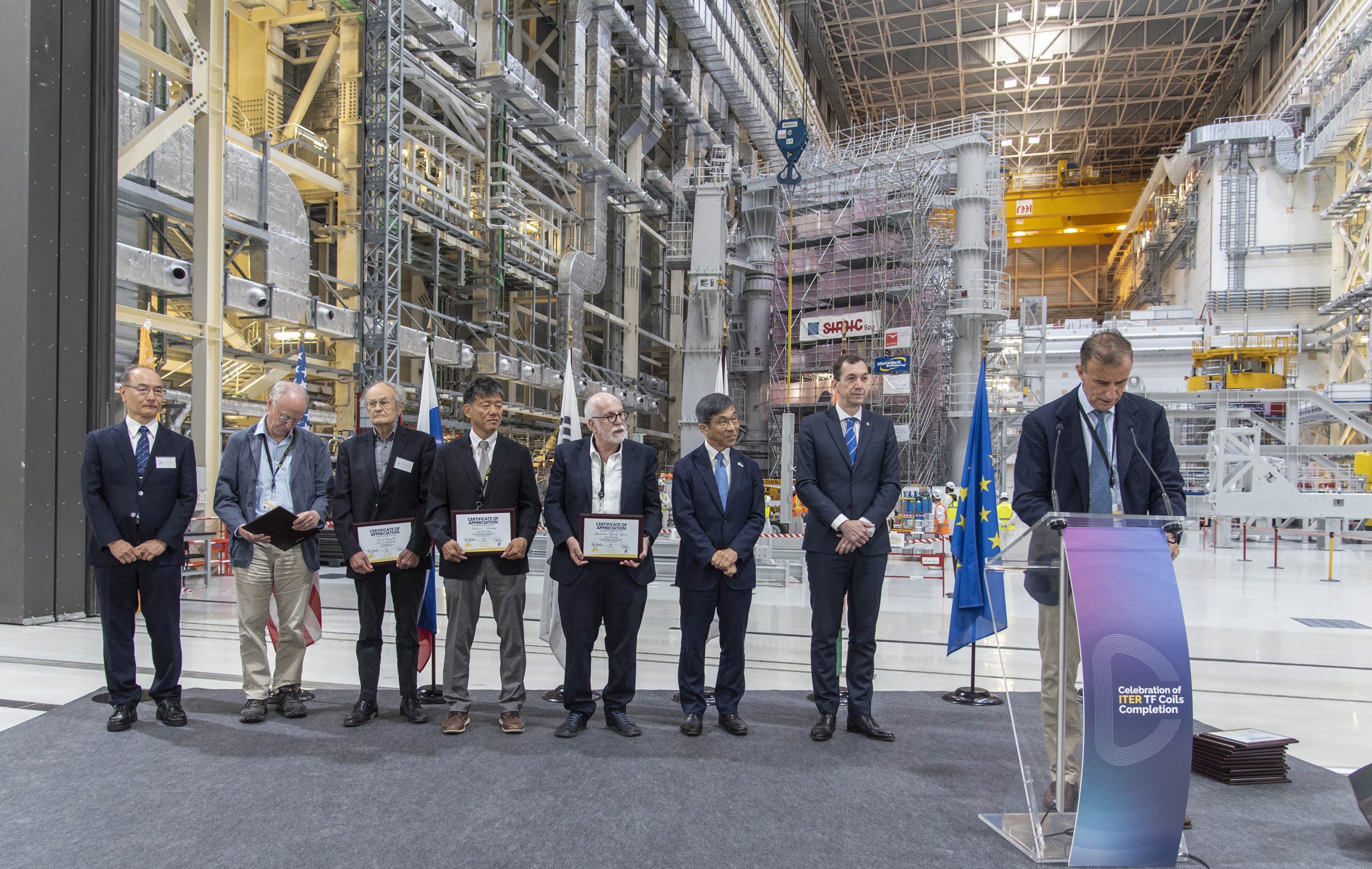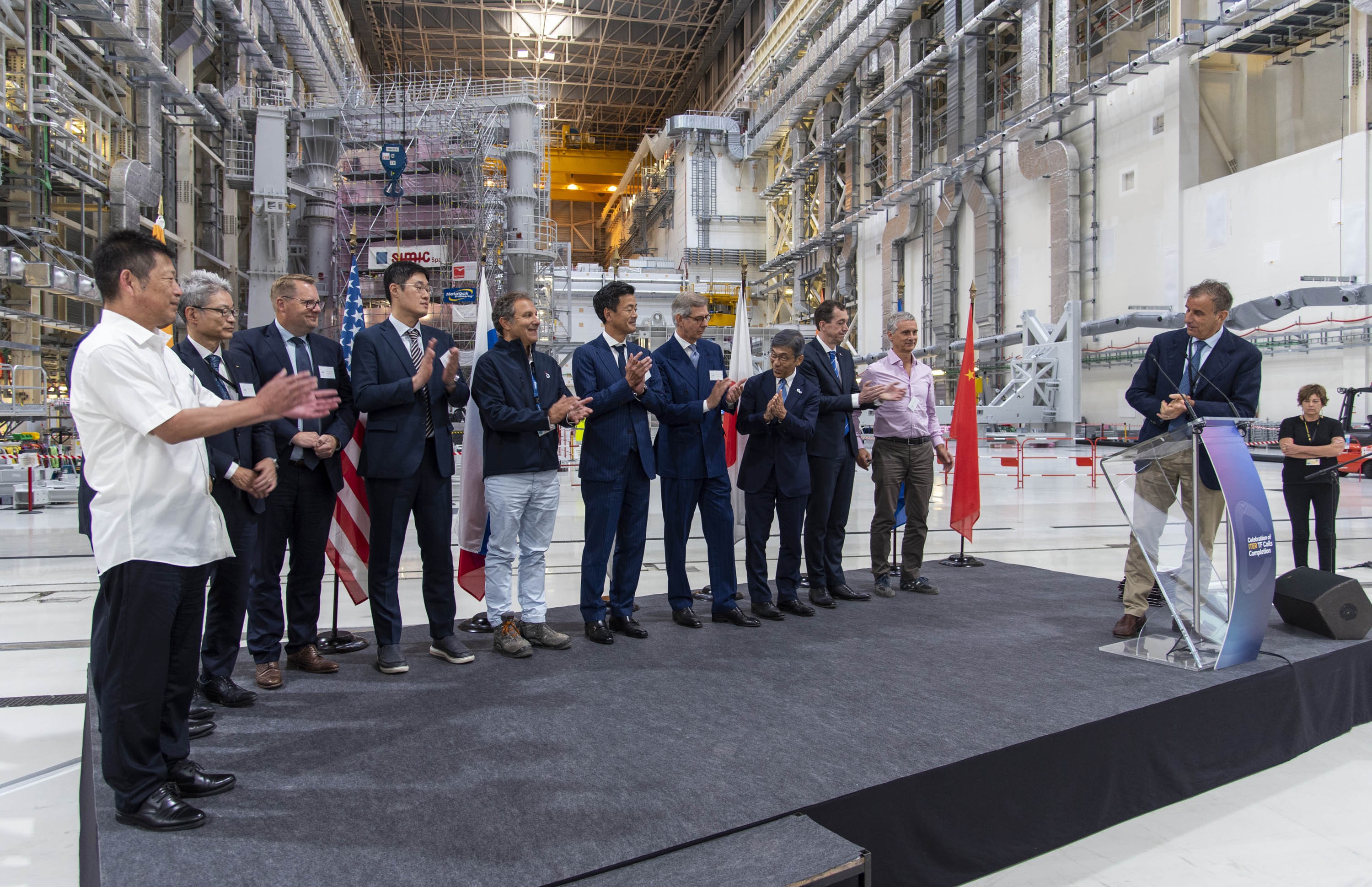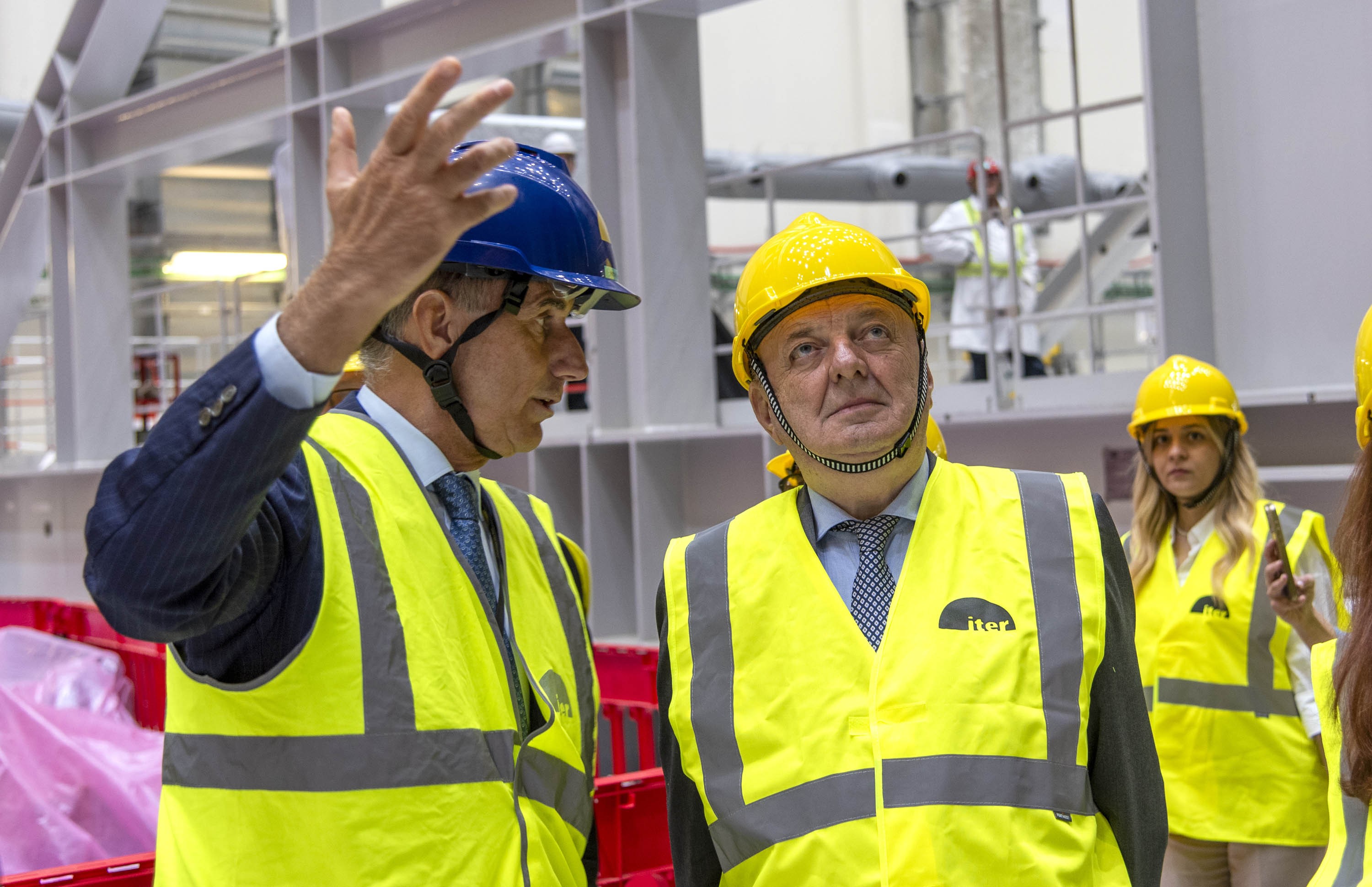« Une belle journée pour la planète »
Le 17 avril 2020, un peu avant 2h00 du matin, un puissant semi-remorque, escorté par plusieurs dizaines de véhicules d'assistance technique et de sécurité franchissait les grilles du site ITER. Sur son plateau, soigneusement emballée dans une bâche de protection, une charge en forme de « D », massive et volumineuse—la première des 19 bobines de champ toroïdal (dont un rechange) qui équiperont le tokamak ITER.
La nature de cette pièce nous était familière. Au cours des dix années précédentes, nous l'avions vu peu à peu prendre forme, depuis la fabrication des premiers brins supraconducteurs en niobium-titane jusqu'au câblage et au gainage du conducteur ; depuis l'usinage des plaques radiales, jusqu'à l'insertion finale dans les coques d'acier. Mais se retrouver en présence de de la pièce finalisée constituait une expérience totalement différente. Ses dimensions donnaient une idée de la taille exceptionnelle du futur tokamak ITER.
Fournie par l'Europe, cette première bobine de champ toroïdal (TF9) avait parcouru une distance relativement modeste depuis son site de fabrication en Italie. Huit jours plus tard, le samedi 25 avril, une deuxième bobine (TF12) partie du Japon arrivait sur le site ITER après avoir vogué plus 10 000 kilomètres sur les océans. Au cours des trois années et demie qui ont suivi ces livraisons initiales, les 19 bobines (10 fournies par l'Europe et 9 par le Japon) ont été fabriquées et réceptionnées sans encombre. C'est cette prouesse industrielle et logistique sans précédent qui a été célébrée le lundi 1er juillet en présence de plusieurs figures historiques de cette grande aventure et de hauts représentants des partenaires d'ITER qui contribué à ce sous-programme stratégique.
Comme l'a souligné Pietro Barabaschi, le directeur général d'ITER, en accueillant les participants, les bobines de champ toroïdal d'ITER, hautes de 17 mètres, « ne dépareraient pas dans un film de science-fiction ». Quarante fois plus lourdes que les aimants de l'instrument Atlas du CERN, les plus gros aimants en fonctionnement dans le monde, elles représentent une « incroyable avancée » technologique. « Conçues et construites par l'esprit et la main humaine », ces merveilles technologiques constituent bien plus que « l'épine dorsale de la machine ITER ». Leur processus de conception et de fabrication a mobilisé « la quasi-totalité des Membres d'ITER » et elles sont « l'âme même » du programme.
Masahito Moriyama, le ministre japonais de l'Éducation, de la Culture, des Sports, de la Science et de la Technologie (MEXT), et Gilberto Pichetto Fratin, le ministre italien de l'Environnement et de la Sécurité Énergétique, ont, eux aussi, aussi insisté sur la dimension internationale de l'entreprise, « l'intégration de tous les efforts » ainsi que les « percées technologiques » qui ont abouti à la fourniture des 19 bobines de champ toroïdal du tokamak ITER. Tous deux ont replacé cette réalisation exceptionnelle dans un contexte plus large : « la capacité de la fusion à résoudre simultanément les problèmes énergétiques et environnementaux de la planète » (Moriyama) et « un avenir porté par une énergie propre, sûre et quasiment inépuisable » (Pichetto Fratin).
« Une belle journée pour la planète », c'est en ces termes que la commissaire européenne à l'Énergie e/node/15565 a qualifié ce premier jour de juillet. « Les bobines de champ toroïdal sont considérées depuis longtemps comme l'un des éléments les plus complexes à fabriquer, a-t-elle expliqué dans son allocution vidéo. En Europe, plus de 40 entreprises et 700 personnes ont contribué à leur réalisation, sous la houlette de Fusion for Energy. Certaines de ces entreprises appliquent aujourd'hui à d'autres projets les technologies et le savoir-faire développés pour ITER, ce qui montre bien l'importance de la valeur ajoutée dont bénéficient ceux qui travaillent pour le programme. »
Pour l'ambassadeur de Chine en France Shaye Lu, qui a rappelé que l'accord de fourniture de câble supraconducteur avait été signé en 2008 pour livrer la totalité de ses fruits huit ans plus tard. « ITER [...] incarne les espoirs de l'humanité, sa quête de paix et de développement durable. Il est le petit Soleil qui rayonnera sur l'avenir partagé de la communauté humaine. »
La taille et la complexité de la fabrication des bobines de champ toroïdal, ainsi que les multiples défis technologiques et organisationnels auxquels a dû faire face l'industrie en Europe comme au Japon, étaient parfaitement illustrés par le film de 8 minutes qui a été projeté devant l'assistance. Alors que le processus de fabrication se déployait sous leurs yeux, des brins supraconducteurs au « câble en conduit », du bobinage des « doubles galettes » à l'insertion dans les coques, et de l'usinage final à l'expédition et à la livraison, les participants ont pu mesurer l'ampleur de ce qui avait été accompli.
La fabrication des bobines de champ toroïdal « a nécessité une expertise de pointe, des installations de grande taille et des équipements spéciaux, une grande coordination entre les différentes interfaces et une stratégie d'approvisionnement permettant de fournir tous ces éléments, a expliqué Marc Lachaise, le directeur de l'agence domestique européenne Fusion for Energy. à première vue, tout cela aurait pu sembler impossible, mais nos équipes ont prouvé le contraire. »
Tout comme Fusion for Energy en Europe, l'Institut national japonais pour la science et la technologie quantiques (QST) a organisé la fourniture des bobines de champ toroïdal japonaises. Son président, Shigeo Koyasu, a exprimé sa gratitude envers « tous les précédents directeurs généraux d'ITER » ainsi que l'ensemble des hommes et des femmes dont les efforts au sein d'ITER contribuent à l'avènement d'« une société pacifique et prospère ».
Certains de ces contributeurs emblématiques, ingénieurs, scientifiques, logisticiens et représentants de l'industrie, ont été invités à monter sur scène. Le directeur général Pietro Barabaschi a qualifié le premier d'entre eux, Michel Huguet, de « père de ces bobines. » Le physicien, qui a intégré le programme de fusion français en 1969 et dirigé pendant plus de dix ans (1992-2003) le site ITER commun de Naka, au Japon, a rappelé au public que la prouesse que l'on célébrait avait ses origines dans l'événement fondateur de la longue histoire du programme ITER, les « Engineering Design Activities » (activités de conception d'ITER) initiées 32 ans plus tôt.
La présence sur la scène de Kiyoshi Okuno, Neil Mitchell, Alessandro Bonito Oliva et Norikiyo Koizumi constituait un puissant symbole de ce que Michel Huguet a un jour appelé la « chaîne multi-générationnelle des bâtisseurs de la fusion », qu'il a comparée aux « bâtisseurs de cathédrales du Moyen Âge », engagés comme eux dans une entreprise dont « l'échelle de temps n'a pas de précédent ». Si ce 1er juillet, la cathédrale d'ITER était encore loin d'être achevée, dix-huit de ses principaux éléments l'étaient et cette réalisation hors du commun méritait amplement d'être saluée.
Découvrez la vidéo de la fabrication des bobines de champ toroïdal d'ITER ici.
Vidéo de la cérémonie ici.

